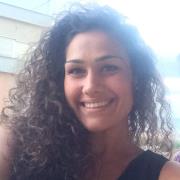The HTTP request to 'GET https://nuget.telerik.com/v3/package/telerik.ui.for.aspnet.core/index.json' has timed out after 100000ms.
Retrying 'FindPackagesByIdAsync' for source 'https://nuget.telerik.com/v3/package/telerik.datasource/index.json'.
The HTTP request to 'GET https://nuget.telerik.com/v3/package/telerik.datasource/index.json' has timed out after 100000ms.
Retrying 'FindPackagesByIdAsync' for source 'https://nuget.telerik.com/v3/package/telerik.datasource/index.json'.
The HTTP request to 'GET https://nuget.telerik.com/v3/package/telerik.datasource/index.json' has timed out after 100000ms.
Retrying 'FindPackagesByIdAsync' for source 'https://nuget.telerik.com/v3/package/telerik.ui.for.aspnet.core/index.json'.
The HTTP request to 'GET https://nuget.telerik.com/v3/package/telerik.ui.for.aspnet.core/index.json' has timed out after 100000ms.
Retrying 'FindPackagesByIdAsync' for source 'https://nuget.telerik.com/v3/package/telerik.ui.for.aspnet.core/index.json'.
The HTTP request to 'GET https://nuget.telerik.com/v3/package/telerik.ui.for.aspnet.core/index.json' has timed out after 100000ms.
Retrying 'FindPackagesByIdAsync' for source 'https://nuget.telerik.com/v3/package/telerik.datasource/index.json'.
The HTTP request to 'GET https://nuget.telerik.com/v3/package/telerik.datasource/index.json' has timed out after 100000ms.
Retrying 'FindPackagesByIdAsync' for source 'https://nuget.telerik.com/v3/package/telerik.ui.for.aspnet.core/index.json'.
The HTTP request to 'GET https://nuget.telerik.com/v3/package/telerik.ui.for.aspnet.core/index.json' has timed out after 100000ms.
Retrying 'FindPackagesByIdAsync' for source 'https://nuget.telerik.com/v3/package/telerik.datasource/index.json'.
The HTTP request to 'GET https://nuget.telerik.com/v3/package/telerik.datasource/index.json' has timed out after 100000ms.
Retrying 'FindPackagesByIdAsync' for source 'https://nuget.telerik.com/v3/package/telerik.ui.for.aspnet.core/index.json'.
The HTTP request to 'GET https://nuget.telerik.com/v3/package/telerik.ui.for.aspnet.core/index.json' has timed out after 100000ms.
Retrying 'FindPackagesByIdAsync' for source 'https://nuget.telerik.com/v3/package/telerik.datasource/index.json'.
The HTTP request to 'GET https://nuget.telerik.com/v3/package/telerik.datasource/index.json' has timed out after 100000ms.


The "Name" column locks correctly, but the "Actions" column only locks the header — the cell content scrolls with the rest of the grid.
I’ve used
locked: true and assigned proper width, but it doesn't behave like a fully frozen column.The action cell is rendered using a custom React component inside
cell.Is there a known limitation or workaround to fully lock custom cell columns in the TreeList?
below is one of the example that I am attaching...
please look into this and let me know
https://stackblitz.com/edit/react-kmatjerp-nshfqmfg?file=app%2Fapp.tsx


when I adaptive my component for another size I get this bug. How can I control line position of time. I didn't find any class or style to control behavior of scroll line.


I’m currently using the Kendo React Workbook to export Excel files with around 10,000 main rows, each having multiple nested child rows. Both the main table and each child table have a large number of columns — typically between 60 and 90 columns each.
The export process itself is fast until calling toDataURL(), but the file download takes several minutes, impacting user experience.
I tried using toBlob() as suggested in some docs, but the method does not exist in the current API.
Could you please advise on the best practices or any performance optimizations for exporting large nested datasets with many columns?
Also, is there any alternative API for exporting large files efficiently?
Thanks in advance for your support!


We are planning to use Kendo React v5.9.0 in our System and this system will be exported.
Could you please tell me the ECCN for Kendo React?
Thank you!


Hi I am using the new statemanagement with checkboxes https://www.telerik.com/kendo-react-ui/components/grid/selection/multi-row-selection#combining-selection-with-data-operations-filtering-sorting-paging-etc
I want to replace that checkbox with our own design library's checkbox and style accordingly.
There's currently no way apart from inspecting and styling the component, would you guys suggest some ways to achieve this?
I'm using the exportVisual and exportImage APIs to export a chart to a PNG file in my React application. I expected that setting a larger width and height in the exportImage options would result in a proportionally scaled-up chart. However, while the output image has the correct dimensions (e.g., 1920x1080), the chart content itself does not scale up — it stays small in the top-left corner and does not fill the canvas.
It seems that the exportImage function does not automatically scale the chart visual to match the specified output size.
Please let me know if this is the intended behavior or if there's a simpler way to scale the visual.
Thanks!
Dbcojf8y (forked) - StackBlitz

autoProcessData=true in Grid, and I want to access the processed data after filters are applied. For example, if I start with 50 items and a filter reduces it to 10, how can I access those 10 filtered items? Is there a callback or method to get the processed data after filtering? <Grid
data={addressList}
dataItemKey={DATA_ITEM_KEY}
className="k-grid-no-scrollbar border-none bg-transparent"
autoProcessData={true}
defaultSkip={0}
defaultTake={10}
pageable={{
buttonCount: DEFAULT_TABLE_BUTTON_COUNT,
pageSizes: DEFAULT_TABLE_PAGE_SIZES,
}}
sortable={{
allowUnsort: true,
mode: 'multiple',
}}
>Hello all, when I use the dropdown in KendoReact and filter for a specific record, the filtered list appears far away from the input, which is awkward. Can anyone help me with this?
Thank you all
1. before
2. after








